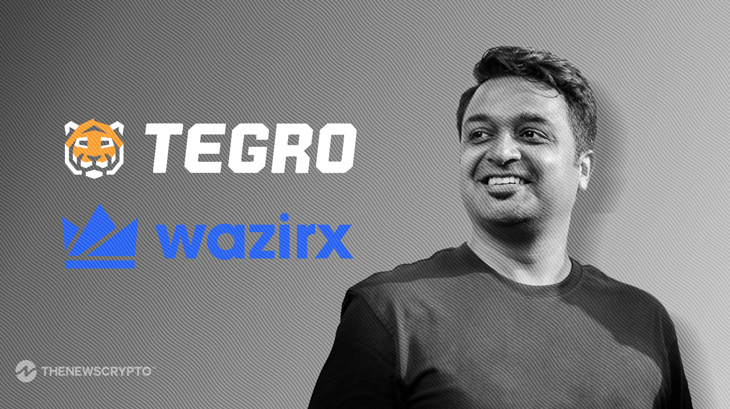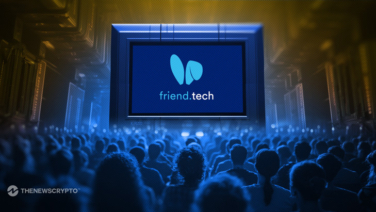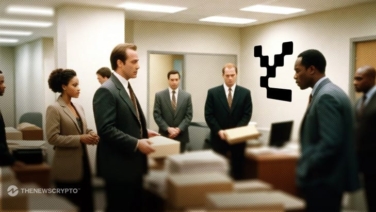The natural evolution of Game Finance (GameFi) from Web2 to Web3 has been a journey that has yielded crucial lessons. The bear market that intensified in 2022 provided a boost for innovators and builders in the space to experiment with new paradigms. Ultimately, users are getting the opportunity to explore the evolving trends of Web3 gaming.
How far have we progressed from day zero when the transition was initiated until now? Are the current market dynamics healthy? What challenges are being tackled when it comes to trading NFTs, the core class of in-game assets?
To get a clear picture and understand how the Web3 gaming ecosystem is progressing, we had a candid conversation with Siddharth Menon, co-founder of Tegro and WazirX. Delivering simplified insights, he guided us through the behind-the-scenes of in-game economies and Web3 marketplaces. The talk also encompassed the story of WazirX and the evolving crypto regulatory landscape.
TheNewsCrypto: How does Web3 gaming differ from Web2 gaming and what sets apart this paradigm shift?
Siddharth Menon (SM): We are in a transition to tokenizing the world and moving into the digitalization of things. One aspect that excites me is reimagining games. We’ve witnessed games becoming more realistic over time. When I started, playing a flight simulator felt like a near-real experience of flying a plane. Sounds have become more lifelike, and simulations have become increasingly real.
Up until now, we’ve played games with virtual in-game currency. The next big experiment, or rather, evolution, is going to be the monetization of games. It’s a very natural progression, and it’s something people desire. We’re simply waiting for the right set of tools to become available.
When the internet emerged, multiplayer gaming became a reality. It allowed people to play with others from anywhere in the world. I believe that blockchain empowers us to add a financial layer on top of virtually anything. I’ve identified a strong use case for crypto in this space — games, a natural fit.
Until now, games have primarily been played for entertainment and leisure. There’s also a growing presence of esports, which injects more money into the gaming ecosystem. However, what’s even more important is the emergence of a dynamic market for in-game assets within the gaming economy. This demand and supply for virtual assets are evident in platforms like Steam stores and Counter-Strike (CS) marketplaces. These serve as early signs of what the future might hold. Nevertheless, there is a need for a new evolution, one that grants access to everyone. This is where blockchain gaming comes into play.
The most significant difference I noticed was this: in the Web2 gaming landscape, players only play the games. Web3 opened up opportunities for players to become investors and traders as well. This shift transformed the gaming industry. Suddenly, there was a growing demand for specific in-game assets, and players began participating in this new marketplace. If I spent hours playing a game, I could potentially earn money from it. This transition aligns with discussions about the metaverse and the idea of living within a virtual world becoming more tangible. We are in these early days.
People were surprised to learn that games like Candy Crush generate about $300 to $400 million annually, despite being relatively simple. Financializing gaming in the Web3 world will revolutionize the way we approach and enjoy gaming. We are still in the early stages of this transformation, but it will be fascinating to see how it unfolds.
TheNewsCrypto: How do you see the user traction in Web3 gaming? Do we have an ample user base?
SM: It’s a pattern seen in any industry that starts early, where you have people excited about it at the beginning, but the excitement tends to wane. Eventually, builders start contributing to the industry’s growth. , a fundamental shift has occurred. Until now, players were only consumers in the market, spending money on games. However, we see a fundamental shift in Web3 gaming from a revenue perspective. Now, players are actively participating in the success of the projects. They are not just consumers but are also becoming contributors to the community. The success of a game depends on how well it engages its community.
Unlike traditional games, where players were merely consumers and developers made all the profits, Web3 gaming follows a more community-driven approach. Players now have a stake in the project’s success and provide constant feedback to shape how the game evolves. This is a significant departure from games like Counter-Strike, where only developers reaped the rewards.
We are currently in an experimental phase. Concepts like inflation and deflation play a crucial role in the Web3 gaming ecosystem. In Web 2 games, inflation was not a significant concern because there was no secondary market for in-game assets. But in Web3 gaming, everything operates within an open market. Excessive inflation can lead to plummeting prices, as we’ve seen with Axie Infinity’s Axies, which were once valued at thousands of dollars and are now worth less than a dollar due to inflation.
Developers are now in a phase of realization, understanding that they not only have to create great games but also maintain a balanced in-game economy for sustainable growth. This involves experimenting with various economic models to ensure that the game’s success aligns with a stable in-game economy.
The next generation of games will likely be more fun and economically sound. For example, a game may be entertaining, but if the economic aspect is constantly unstable, causing players to lose money, it won’t attract a sustainable player base. This poses a new challenge for developers and players alike, and it’s an exciting phase we are entering. In the next two years, we can expect to see remarkable games emerge in this evolving landscape.
TheNewsCrypto: What are your thoughts on the evolving paradigms – play-to-earn (P2E), move-to-earn (M2E), and other “x”-to-earn models – and the development of in-game economies?
SM: I believe that fundamental models are crucial. I’ve been developing a model called Tegronomics, which addresses some of the key issues. It doesn’t matter if you’re a player or a spectator in the Play-to-Earn, Move-to-Earn, or any x-to-Earn models, but there’s an underlying economy that needs attention. In the Web2 gaming space, only a small percentage, probably 1-2%, of the user base makes in-app purchases. However, in Web3, the goal is to make everyone part of the economic cycle. In the real world, nothing comes entirely for free. There’s a cost, even for basics like food and water.
Building a balanced economy where everyone participates is essential. The concept of this economy draws inspiration from what exists today, following models like Maslow’s Hierarchy of Needs. At the bottom, there’s the “Need Economy,” which covers essentials that everyone requires to participate in the game, such as bullets or certain items. Developers must ensure these assets are affordable. Next is the “Want-Based Economy,” similar to real-life items like cars or houses. These are desirable but not essential for gameplay. At the top is the “Achievement-Based Economy,” where rare and status-symbol items come into play. In Web2, there’s often an excessive focus on rare items, while the rest of the economy is neglected.
For a sustainable in-game economy, it’s crucial to balance the need, want, and achievement aspects. This balance determines factors like supply, demand, pricing, and rarity. If the top-tier elements aren’t genuinely rare, it can affect the entire ecosystem, as seen in the case of Axie Infinity. The “Tegronomics” approach provides a framework to help game studios make informed decisions and create a more sustainable economy.
TheNewsCrypto: How do you view the current market dynamics of NFTs?
SM: When I started WazirX in 2017, it was during the peak of the previous bull market. There were only a few hundred thousand users, and when the bear market hit, many thought it was dead. However, we kept building, and the next market cycle brought growth.
NFTs did exist in 2017, but they were so small that nobody talked about them. I got introduced to them when CryptoKitties entered the space. This is considered the first bear market for NFTs, but in reality, it’s the second market. Bear markets mostly affect those focused on price action, but true believers in the technology remain excited.
WazirX had a similar experience, growing from 200K to 18 million users during the bull market. Each cycle brings more people into the crypto space. Today, the market is expanding exponentially, offering opportunities for anyone involved. This is the time to create and keep building.
TheNewsCrypto: Could you share your personal perspective on the decision to shut down the WazirX NFT marketplace in February 2023? What’s your comment on the regulatory landscape and user base back then?
SM: WazirX was one of the first in Asia to launch a large NFT marketplace, driving innovation. However, from a regulatory perspective, things were quite unclear. The government didn’t fully understand decentralized platforms with no KYC on a DEX exchange. This complexity made it challenging to do business in this space. Our perspective was that NFTs are undoubtedly promising, but it might make more sense to approach them differently. This is one of the reasons we decided to pull back. Nonetheless, we firmly believe it’s something worth fighting for.
WazirX is already engaged in numerous battles to promote crypto adoption in India and pioneer regulatory advancements. The NFT market is just a small part of our efforts, and we plan to revisit it later.
TheNewsCrypto: Is there a plan to relaunch the NFT marketplace?
SM: Firstly, we need to ensure basic user needs are met, such as facilitating access to crypto with fiat currency. Back in 2018, this was a challenge due to a banking ban. At that time, only through WazirX’s P2P platform could people buy even small amounts of crypto. Our primary goal remains to give people fundamental access to crypto, from which many other businesses can flourish.
TheNewsCrypto: There are both pros and cons associated with centralized exchanges (CEX) and decentralized exchanges (DEX). Platforms like Tegro are upholding a hybrid model combining features of CEX and DEX. How will this approach benefit users?
SM: WazirX is a centralized exchange (CEX) that provides access to cryptocurrencies using Indian Rupees (INR) and various other methods. WazirX is focused on achieving regulatory compliance. Establishing regulatory compliance for a financial institution involves a multitude of tasks, including taxation, reporting, and other necessary measures to ensure everything is in order. A considerable effort has been dedicated to making the platform secure and safe for all users.
In the realm of decentralized exchanges (DEXs), we are essentially discussing the creation of a ‘metaverse exchange.’ Here, users can harness the power of their own wallets and avoid scenarios where they surrender their asset custody to third parties, as seen with platforms like FTX. Tegro’s mission is to upgrade crypto trading to the next generation. We aim to bring scalability to DEXs, providing a trading experience that mirrors what you would expect from a CEX.
CEXs are far more efficent than DEXs, in terms of users’ protection against MEV (Miner Extractable Value) attacks and reduced risk of users losing their funds due to various issues, such as poor liquidity. For instance, numerous users lost millions of dollars in MEV attacks.
Our objective is to establish a trusted DEX where anyone can participate, from retail traders to institutions, enabling high-volume and high-frequency trading without the associated risks. We seek to recreate the success we achieved at WazirX, where we brought numerous Indian institutions into the cryptocurrency sphere. These institutions still face barriers when transitioning to DEXs because the current DEX landscape isn’t tailored to their needs. Our goal is to bridge this gap, making the transition to efficient DEX trading as seamless as possible. This is the final piece of the puzzle – how to create an efficient market that bridges the gap between CEXs and DEXs. We are committed to addressing this challenge from the ground up and systematically working to solve it.
TheNewsCrypto: How does Tegro stand out from WazirX in terms of its approach?
SM: Tegro is a completely independent venture. Currently, I’m primarily involved with WazirX in an advisory role. With Tegro, we are tackling a completely different challenge that extends beyond India. It’s a global problem that needs to be addressed. Tegro is designed as a global product, catering to users worldwide. It will operate in a more decentralized manner, allowing anyone, whether they are institutions or retail traders, to engage in high-volume trading. Our primary focus is on solving this problem and making it accessible to a wide audience on a large scale.
TheNewsCrypto: By integrating the NFT20 protocol, how is Tegro enhancing the NFT trading for users, and what advantages does this integration bring?
SM: One of the biggest challenges with NFTs, in general, is liquidity. If the secondary market lacks sufficient liquidity, it becomes challenging for buyers to enter and exit positions. Buyers can only purchase items if they are confident they can later sell them with ease. Even today, buying and selling NFTs in bulk is a difficulty within the NFT space. Thanks to innovative products like Blur, the landscape is evolving. We initially began with platforms like OpenSea, which catered more to retail traders. But now Blur has taken a more institutional and pro-trading approach. However, there’s still room for further advancement, enabling users to buy and sell at larger quantities and higher frequencies. This is where NFT20 comes in—it aims to streamline high-volume buying and selling. Institutions, accustomed to trading millions in Bitcoin, sometimes hesitate to explore NFT trading due to its perceived complexity.
Our goal is to simplify NFT trading to the point where it’s as straightforward as trading Bitcoin, making it more accessible to institutions. The objective is to bridge the gap between these two worlds, ensuring both liquidity for institutions and convenience for traders. Non-fungibility does bring friction into trading, but as seen with assets like Board Apes, most items are traded at prices that make them almost fungible.
TheNewsCrypto: What role does Tegro play in fostering the developer ecosystem in Web3?
SM: Building in Web3 involves a collaborative approach, where if the project succeeds, everyone involved should reap the benefits. It’s not just about financial profit; it’s also about gaining knowledge and other valuable outcomes. Our focus is on creating structures where developers, traders, and influencers can all benefit from being a part of our ecosystem.
We help developers to create business models around them. Many institutions are eagerly waiting for high-frequency trading solutions, for instance, and developers can easily build and offer these solutions, generating revenue by selling them to more institutions. There’s immense potential in developing software development kits (SDKs) and other tools on top of our API. We are gradually opening up access to our API, which is currently in beta testing, and we expect it to be fully ready later this month or early next month.
From a developer’s perspective, we also have a champion program for those who want to refer more people and traders to join our platform. This program offers various incentives for individuals willing to put in the work.
TheNewsCrypto: Lastly, what are your thoughts on the spot Bitcoin exchange-traded fund (ETF) approval and its impact on the crypto market?
SM: In any new market or industry, it’s typically the retail investors who enter first. Whether it’s AI or crypto, it starts with smaller developers experimenting and gradually gains institutional acceptance. In the crypto space, we’ve seen a similar evolution, from individuals casually mining in 2010-12 to large corporations investing millions in mining today. The same goes for trading, starting with people at home and now involving institutions and major players.
The introduction of ETFs represents another big milestone, making the crypto market more institutional-friendly. This transition from retail to institutional participation has occurred in various industries in the past, particularly in the US, where there is abundant capital but a lack of clear regulatory pathways. ETFs will open up more opportunities for adoption. We eagerly await their arrival, and while it may take some time, it’s inevitable.
Recently, there was a surge in excitement in the market, possibly due to unverified news or other factors. It demonstrates how ready people are for this shift, and the anticipation is real. The hype surrounding it can quickly sway the market, as we’ve seen. Many people believe in the potential for more institutions to onboard the crypto space.
Disclaimer: The information provided in this interview article is for informational purposes only. It is not intended to be, nor should it be construed as, investment advice, financial guidance, or a recommendation to make any specific decisions. Readers are encouraged to conduct their own research.






